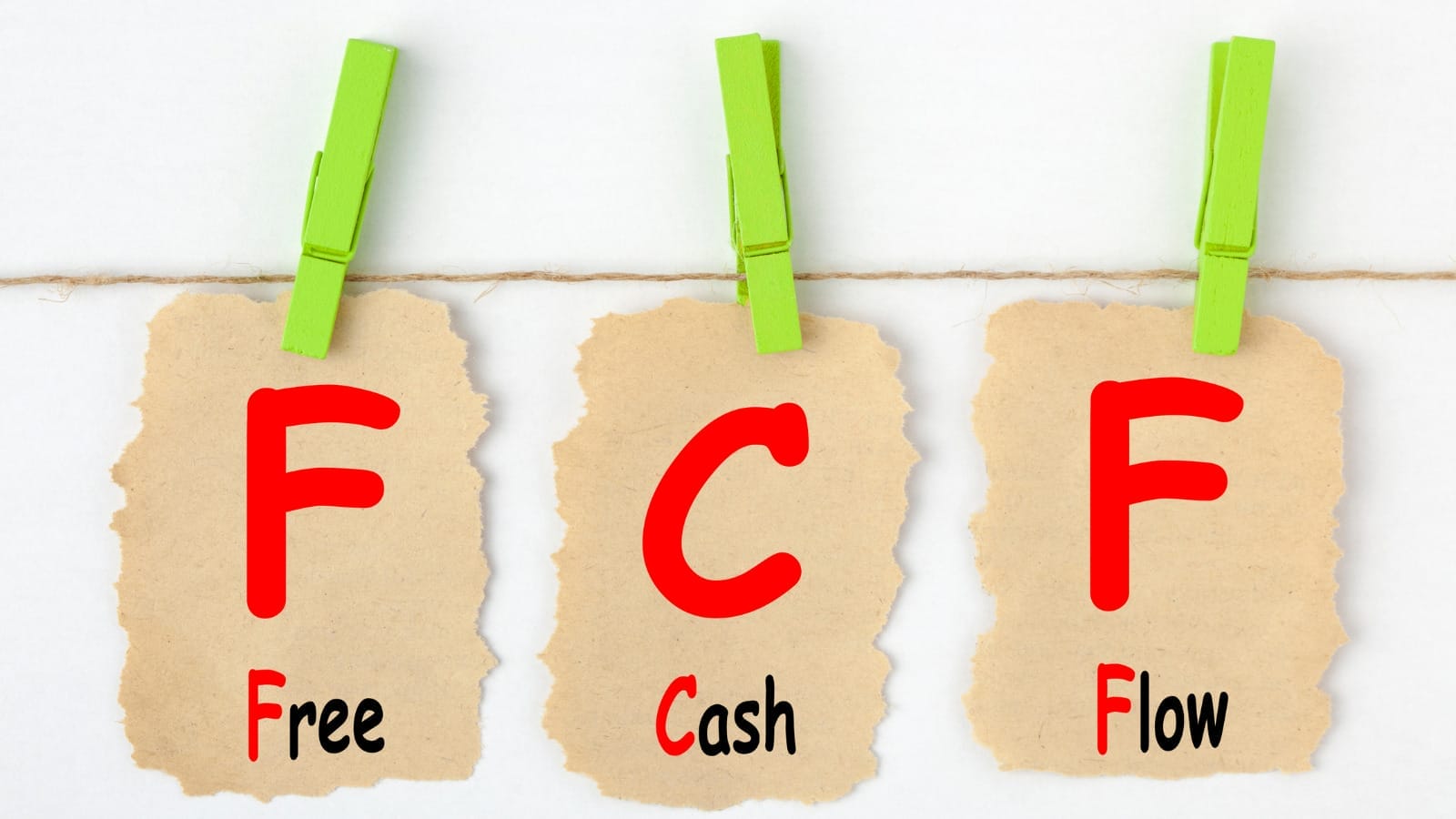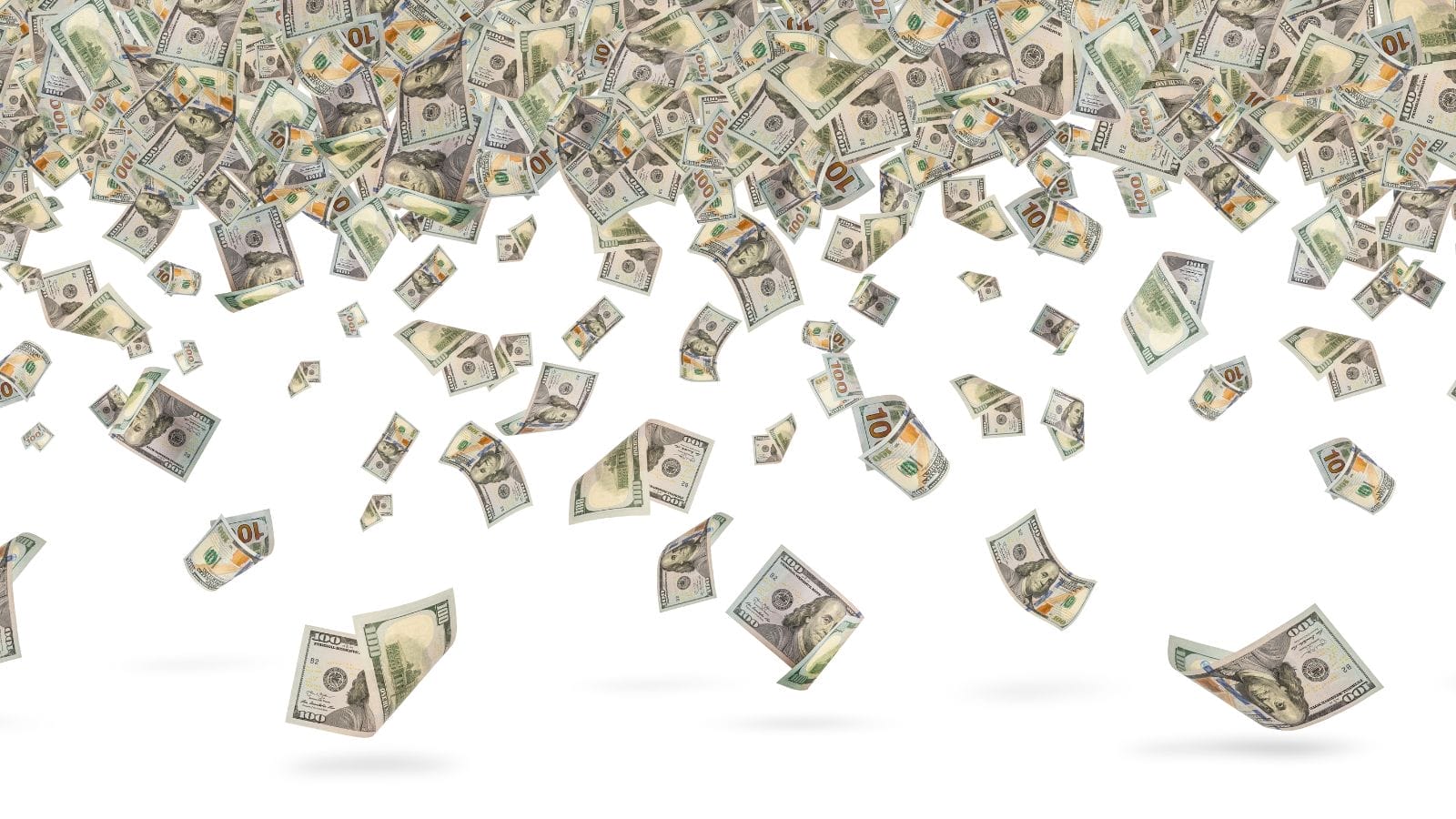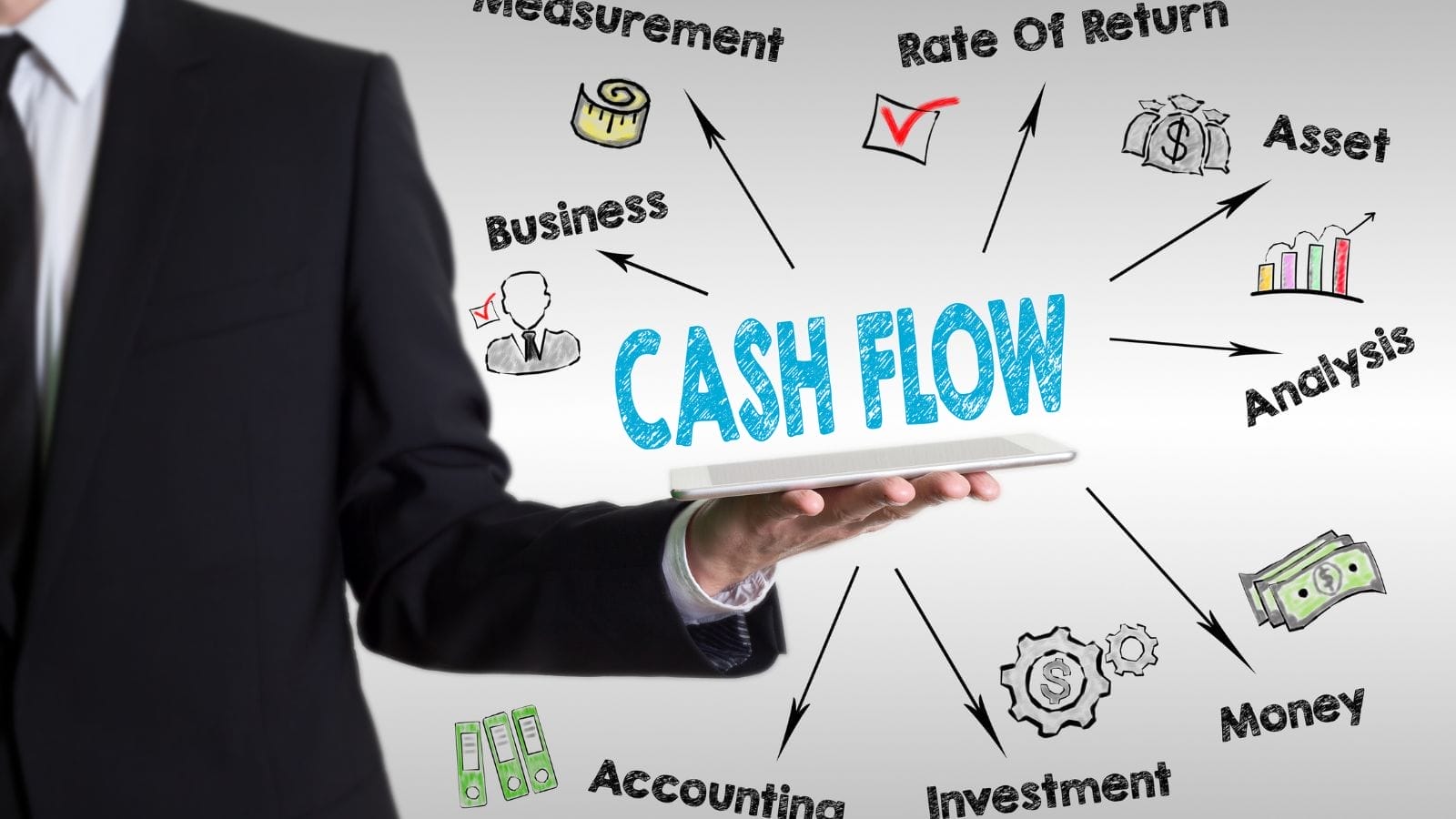Updated 12/12/2023
“Intrinsic value can be defined simply: It is the discounted value of the cash that can be taken out of a business during its remaining life.”
Cash is the lifeblood of all companies, and determining the fair value or intrinsic value is a matter of calculating what the future cash flow is worth today. There are many methods to determine fair value, using discounted cash flow models, relative valuation, and pricing.
Today, we will dive into the unlevered free cash flow model, also known as the free cash flow to the firm. Using the unlevered free cash flow model, we can determine the whole company’s value and find an approximate price to pay for that value. Debt and equity have a role to play in the value of a company, and which model we choose determines how much of a factor we think they will have on that value.
In today’s post, we will learn:
- What is Unlevered Free Cash Flow
- What is the Difference Between Unlevered and Levered Free Cash Flow?
- How Do You Calculate Unlevered Free Cash Flow?
- Building a DCF Using the Unlevered Free Cash Flow Formula
- Example of Unlevered Free Cash Flow in a DCF
Okay, let’s dive in and learn more about the unlevered free cash flow formula.
What is Unlevered Free Cash Flow?
Unlevered free cash flow, according to Corporate Finance Institute, is:
“Unlevered Free Cash Flow (also known as Free Cash Flow to the Firm or FCFF for short) is a theoretical cash flow figure for a business. It is the cash flow available to all equity holders and debtholders, after all, operating expenses, capital expenditures, and investments in working capital have been made.”

The unlevered free cash flows used to value any company represent the company’s enterprise value, and those cash flows are available to all shareholders, including equity and debt holders.
They are similar to the levered cash flows or free cash flow to equity, except they value its operations.
We will get to the formula calculations in a moment, but the unlevered cash flows focus on the operations of the business and the capital investments needed to grow those revenues and operations.
The main focus of the unlevered cash flows is the operating earnings of the company, represented by the operating earnings or margins. The levered cash flows measure the net earnings of the company.
We call it an unlevered free cash flow because it is measured before any debt payments, i.e., interest payments. A downside to this use is the tax benefits a company receives for interest payments, as there is no capturing of those benefits in calculating unlevered free cash flows.
Part of this is by design because when we calculate the cost of capital, we use the after-tax cost of debt, and including that in unlevered cash flow calculations would be double counting.
Before continuing, if you are unfamiliar with the cost of capital or WACC (weighted average cost of capital), please follow the link below to familiarize yourself with that process. The cost of capital is critical to calculating unlevered free cash flow values, and you will be lost unless you understand that idea.
Weighted Average Cost of Capital Guide (+WACC Calculator Excel Download)
Okay, now that we understand what unlevered cash flows are and calculate our cost of capital. Let’s look at the difference between levered and unlevered cash flows.
What is the Difference Between Unlevered and Levered Free Cash Flow?
The main difference between unlevered (firm) and levered (equity) cash flows is the treatment of debt. There are many items that investors need to address when building cash flows. They are:
- Interest payments
- Principal repayments
- New debt issues
- Preferred dividends
We use many of the same inputs to calculate free cash flows, but dealing with the above determines which type of cash flow we wish to use.

There is a financial metric widely used in finance, EBITDA (earnings before interest, taxes, depreciation, and amortization which mirrors levered cash flows. A few differences exist between EBITDA and levered free cash flows: the potential tax liability from earnings, accounting for capital investments, and working capital requirements.
The main measure of levered free cash flows comes from EBIT (earnings before interest and taxes). These flows measure the operating earnings of the business and encompass all of the costs associated with the business’s operations. The costs of operating the business include the cost of goods sold, labor, advertising, R&D, and administrative costs. To arrive at operating earnings, we remove all operating costs from revenues.
To arrive at levered cash flows, we also need to account for the impact of taxes, which we tax on the operating earnings of the business. The EBIT or operating income comes directly from the line item on the income statement.
Once we make the above adjustments, we arrive at the net operating profit after taxes or NOPAT. The NOPAT is the free cash flow to the firm or unlevered free cash flows, and these flows are the company’s present value that we discount back from future flows to find the fair value.
But before we do that, we need to account for capital expenditures, or invested capital, which is a combination of debt and equity, or depreciation, capital expenditures, and changes in working capital.
Because using unlevered cash flows leads to the company’s enterprise value, comparing those values to others in the same industry or competitors is easy. We use unlevered cash flows in a DCF model to value companies.
How Do You Calculate Unlevered Free Cash Flow?
The formula to calculate the unlevered free cash flow for a company is the following:

FCFF = EBIT (1-t) + Depreciation – Capital Expenditure –
Where:
- EBIT = Operating income (income statement)
- t = tax rate (computed by dividing income taxes by EBIT)
- Depreciation = item taken from cash flow statement
- Capital expenditure = line item that comes from the cash flow statement
- ∆ in Non-cash working capital
The best way to illustrate how this works is to use its financials to put it all together. I will use Intel (INTC) as our guinea pig and pull the numbers from the latest annual report, dated January 22, 2021. All numbers listed will be in millions unless otherwise stated:
EBIT (operating income) | $23,876 |
Taxes | $4,179 |
Depreciation | $12,239 |
Capital Expenditure | $14,453 |
Change in NC Working Capital | $1,778 |
We can plug all these into the formula, but first, we need to calculate the tax rate. We divide the taxes by the operating income, which equals:
Tax rate = $4,179 / $23,876 = 17.05%
Okay, now let’s determine what the leveraged cash flow for Intel is for the 2020 year-end.
FCFF = 23,876 (1-.1705) + 12,239 – 14,453 – 1,778 = $15,813 millions
That is fairly straightforward once we know where to get the inputs. The inputs are standard line items, but one of them is a little more of the usual radar: the change in non-cash working capital. The usual standard fare uses the difference between current assets and liabilities to determine the change in working capital. Or, to use the change in working capital, you can calculate from the cash flow statement. However, per both Aswath Damodaran and Michael Mauboussin, a more accurate method is to use non-cash working capital.
The reason for this is it gives us a better insight into the working capital the company is using to drive growth. Cash or cash equivalents are “wasting” assets that sit there, not adding much to the company’s growth, and debt is tackled in the cost of capital and would be double-counted in the quick ratio. If this is confusing, please refer to the following link to better explain:
Non-cash Working Capital: A Critical Component of Valuation and FCF
Building a DCF Using the Unlevered Cash Flow Formula
Okay, now that we understand the basics of calculating unlevered free cash flows, let’s start to put this together to build a model using these cash flows to find the value of a company.

We need to discuss the revenue growth rate, which moves down the line to the unlevered cash flows. There are three ways to go about determining the growth of revenues.
The first is to use historical growth rates for the company and project those forward. Simple and straightforward, but it is anchored in the past and doesn’t account for future growth, and because Intel has rocked in the past, it doesn’t mean it will work in the future.
The second method uses analyst estimates, which you can gather from your favorite financial websites such as Yahoo, Gurufocus, Seeking Alpha, or any you use. The analysts that follow the company issue growth estimates every quarter based on their estimates or projections from the company itself. Each quarter, before COVID-19, every company would issue guidance on revenue growth. These are perfectly fine but no better than estimates, you might assume. Studies have shown that humans, in general, are terrible at forecasting the future, and analysts are no better. I’m not trying to run them down; I only want to highlight options.
The third way, and my favorite, is to use the growth rate, which we can calculate from the company’s fundamentals. To do this, we will use the above numbers from our unlevered cash flow calculations:
Reinvestment = Capex – Depreciation + ∆ in Noncash WC / NOPAT
Taking our numbers from above, we get:
Reinvestment = 14,453 – 12,239 + 1,778 / 19,805 = 20.15%
Next, we calculate the return on capital (ROC), which we use the above NOPAT, divide by the debt-equity, and subtract the cash and equivalents from the balance sheet.
- NOPAT – 19,805
- Equity – 77,504
- Debt – 29,001
- Cash – 13,123
Return on capital = 19,805 / ( 77,504 + 29,001 – 13,123) = 21.2%
Now, we take the reinvestment rate and multiply it by the return on capital:
Expected growth rate = 20.15% * 21.2% = 4.27%
If this process is a touch confusing, don’t feel bad. It was for me, too, at first, but below is a full post explaining it in detail:
How to Use Reinvestment Rate to Project Growth for Valuation
That growth rate we calculated for Intel will be the rate at which we project the revenues for the company into the future.
The next item we need to discuss is the operating income or earnings. These are the earnings we project as unlevered cash flows and help us determine fair value for the company.
Operating margins tend to be more stable than net income or net earnings, and for a company to improve its operating margins, it needs to move the needle on efficiencies. For example, if a company becomes more efficient in improving its SG&A costs by improving efficiencies in their processes, improvements in the operating margin.
Another critical aspect is considering where the company is in its life cycle. A newer company might have lower margins but more room to expand them, whereas a more mature company will have higher margins relative to its sector and less room to expand them.
For example, a new Fintech company might have low operating margins but have room to grow as its revenues grow. In contrast, an older bank like Wells Fargo will have less opportunity to expand its margins. Therefore, when building out your inputs for the DCF model, predicting a margin expansion of 10% for Wells Fargo isn’t the best choice, where maybe a new fintech could easily see that type of expansion.
A great resource for determining operating margins by industry is Damodaran.com; follow the link to see how your company stacks up.
Next, we need to consider the impact of taxes by considering its effective tax rate, which we calculate from its financials, as in the above example. But, we also need to consider the tax rate that the company operates in and project those potential rates.
For example, Intel’s tax rate was 17% for 2020, and with the new administration in place, there is speculation that corporate tax rates will rise. One way to treat this is to increase or decrease the rates to match the country’s tax rate.
The next consideration is the building of the impact of reinvestment to enable the growth of those revenues. That growth comes directly from the investments the company makes to grow. Those investments are represented by invested capital.
We have two choices to build the invested capital for the company. One is to use the inputs we used to generate the reinvestment rate and build a model using the return on invested capital (ROIC), but that is another conversation.
For ease of use, the other option is to consider the denominator of the return on capital ratio, including all the company’s equity and debt minus the cash. Using this invested capital encompasses all the capital necessary to grow the company. Then, we compare this capital to the company’s sales to find the reinvestment efficiency. For example, Intel’s 2020 revenues were $77,867 million, and we divide that by the invested capital of $93,382 million, which gives us a sales-to-capital ratio of:
Sales to Capital ratio = $77,867 / $93,382 = 0.83
To learn more about the sales-to-capital ratio, please follow the below link:
Sales to Capital Ratio: Measuring the Efficiency of a Company’s Reinvestments
Now we take that sales-to-capital ratio and divide that by the change in revenues from the prior year, for example:
2020 | $77,867 |
2019 | $71,965 |
Difference (A) | $5,902 |
Sales to Capital Ratio (B) | 0.83 |
Reinvestment (A/B) | $7,110 |
That reinvestment highlights the cost of reinvestment to grow the revenues by $5,902 million. This is illustrated by subtracting that from our NOPAT or EBIT(1-t) from above.
NOPAT | $19,805 |
Reinvestment | $7,110 |
Unlevered Cash Flows | $12,695 |
Remember that the more efficiently the company reinvests, the faster it will grow.
The next to last input we need to consider is the discount rate, which, in the case of the unlevered cash flow model, will be the WACC or cost of capital that we discussed earlier.
The formula is the same as any DCF we use:
Discount rate = 1 / (1+WACC)
And we build from there, for example:
Discount rate(year 2) = Year Discount Rate * (1/1+WACC)
Now that we have explained this, we will put together a brief example using Intel’s data to highlight how this all works.
Example of Unlevered Free Cash Flow Formula in a DCF
To build this model, we will take the data we calculated from Intel in 2020 and project what kind of value the company is worth. The following inputs will be our basis for finding the fair value.
- Revenues 2020 = $77,867 million
- Operating margins (normalized over last five years) = 28%
- Tax rate = 18%
- Shares outstanding = 4,199
- Terminal rate = 2.34% (based on 30-year Treasury)
- Cost of Capital = 6.46%
- Beta = 1.22
- Risk-free rate = 1.50%
- Equity risk premium = 4.79%
- Invested capital = $93,634 million
- Debt = $36,491 million
- Cash = $23,895 million
- Equity = $81,038 million
- Sales to capital ratio = 0.83
After plugging all of those inputs into a simple model, we get the following NOPAT:
We then discount using the cost of capital or WACC to arrive at the present value of the unlevered free cash flows:
All that leads us to a value after adding all the present values of the unlevered free cash flows, including the terminal value. Then we subtract the debt, add the cash, and divide by the shares outstanding. After all that, we arrive at a fair value of $95.77 for Intel.
The above model is a simple model with a few inputs that help us see the impact of revenue growth, operating margins, reinvestment efficiency, and debt on the company.
If I alter a few of the inputs slightly, we get different results:
- Change the margins to 20% = $65
- Change the revenue growth to 5% = $98
When gathering your numbers, it is best to use the latest numbers; for ease of use, today’s post only used the most recent 10-k. But you can easily gather the latest TTM (trailing twelve months) numbers from sites such as quickfs.net or gurufocus.com. Or you can use the company financials, which will require a few extra steps.
Using models like the above can help you determine what impacts the company’s value the most, whether revenues, operating margins, debt loads, taxes, or other factors. It is important to understand the relationships between reinvestment efficiency and the cost of capital. The bigger the margin, the more growth the company should experience.
A few other thoughts: don’t look for confirming valuations or alter inputs so the model gives you a number you want. It is easy to change those inputs, but you have to think through how logical and realistic those are and adjust accordingly.
Another thought to consider when building DCF models or using them is that they are only a stepping stone to finding a company worthy of your investment dollars. It doesn’t replace understanding the business and its long-term potential.
The last idea is not to obsess about finding the “perfect” number. It doesn’t exist; don’t get so bogged down in the minutiae that you miss the forest for the trees. It is far better to find a range of possibilities and decide which works best for your analysis.
Investor Takeaway
Building DCF models and determining cash flows is one of the best ways to value companies. It allows for a deeper analysis of the company and what fundamentals drive its growth and profitability. They also help us determine the fair value to decide if now is a good time to buy or wait for a better opportunity.
Not every company we encounter will be a good choice and the price we pay matters. Remember that any model is only as good as the inputs: garbage in, garbage out.
Study each company and understand its place in its sector and what kind of prospects it has, and then use an unlevered cash flow formula to find the fair value of that investment.
Like any other process, riding a bike, cooking, or practicing your guitar, with practice, you will become more proficient. And the easier valuing companies will become, but it will never be simple as there are many variables to consider.
And with that, we will wrap up our discussion on unlevered cash flows.
As always, thank you for taking the time to read today’s article, and I hope you find something of value in your investment journey. If I can further assist, please don’t hesitate to reach out.
Until next time, take care and be safe out there,
Dave

Dave Ahern
Dave, a self-taught investor, empowers investors to start investing by demystifying the stock market.
Related posts:
- Explaining the DCF Valuation Model with a Simple Example Updated 9/15/2023 Discounted Cash Flow (DCF) valuation remains a fundamental value investing model. Using a DCF continues as one of the best ways to calculate...
- Valuing Young Companies: A Complete Guide Using a DCF (FCFF) Model Updated 12/12/2023 Valuing a young company is one of the more difficult tasks in valuation. Trying to pin a value on a young company, startup,...
- How to Use Reinvestment Rate to Project Growth for Valuation Updated 5/22/2023 “Leaving the question of price aside, the best business to own is one that over an extended period can employ large amounts of...
- How to Calculate the Cost of Debt Updated 12/19/2023 Determining a financial asset’s value is part of calculating the present value of future cash flows. To value a company, we need to...
